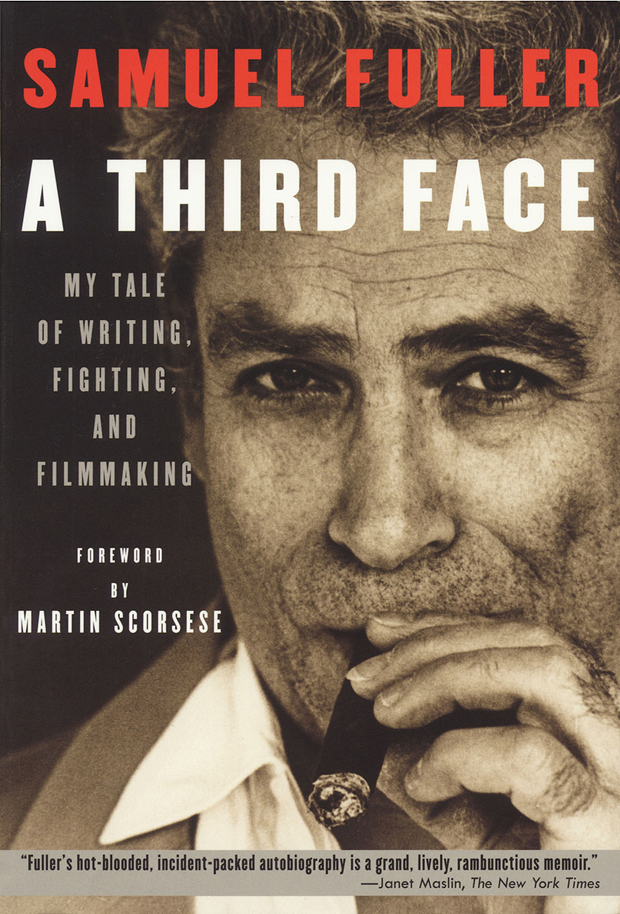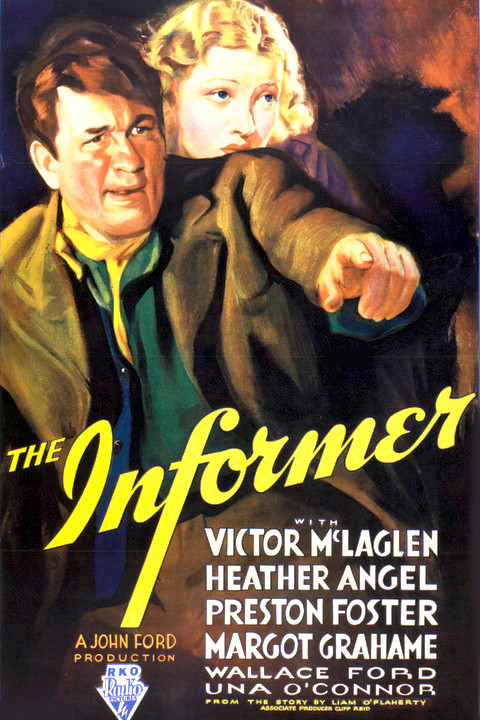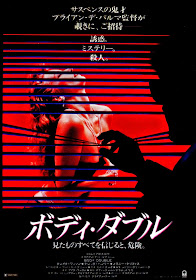Sunday, May 31, 2015
Sunday, May 24, 2015
J.J. Abrams, Our Only Hope
Since there
needs to be something to keep J.J. Abrams fans busy until Star Wars: Episode VII - The Force Awakens comes out in Christmas,
lucky for us, in the new issue of Vanity
Fair there is a cover feature on the film by Bruce Handy with some exclusive
Annie Leibovitz photographs of the actors on set. It isn’t a major revelation
but it still includes some interesting observations from the studio and quotes
from its creators. Now that George Lucas sold Lucasfilms to Disney, with
Kathleen Kennedy in charge, one wonders in what direction they’ll take the
project and how Lawrence Kasden and Abrams’ script is going to look like. After
having watched the two teaser trailers several times I’m still not sure what’s
going to propel the story and what direction it will go in. But I can guess that
whatever it is it’ll be exciting and this mystery is part of its fun.
In the meantime
for any Abrams fans out there you can always check out his great novel S. which he co-wrote with Doug Dorst,
the Alan Dean Foster novelization of Star
Trek: Into Darkness, and the Blu-ray of the film which also includes some impressive
special features. May the Force be with You.
Friday, May 15, 2015
Monday, May 11, 2015
Sam Fuller on John Ford
Some quotations from A Third Face where Sam Fuller discusses John Ford. – D.D.
***
“Thanks to Herbert Brenon
and his patronage, I met members of the “old school” – veteran directors like
John Ford, Raoul Wlash, Howard Waks, Leo McCarey, Todd Browning, Frank Borzage
– the guys who created Hollywood out of a bunch of fruit orchards and dusty
lots with a burning desire to tell great stories.”
“My favorite film of those
formative years was The Informer
(1935) by John Ford. It is truly a masterpiece. Of all the wonderful directors
I met in Hollywood before World War II, I paid special attention to John Ford.
John had a vision up on the screen. John was very supportive of me in the early
years when I needed it. He became a friend and a mentor. Ford invited me onto
his sets, and, when I started directing, he’d drop in on mine. I cherished the
times we were together.
Some critics, looking for a
catchy tag line, have called me “the Jewish John Ford.” It was a ridiculous
thing to say, though I understand people needing reference points. But let’s
face it, next to the monumental Ford, I’d always be a neophyte. To understand
the scope of John’s career, you have to remember that he began as an actor way
before the talkies, with a small role in Birth
of a Nation, in 1915. Over the next sixty-odd years, John Ford would direct
about 140 films. John was a giant, having done it all in Hollywood. I learned a
helluva lot of stuff from Ford, but one of the most important lessons was
modesty. Ford was the most self-effacing of guys. When asked what brought him
to Hollywood, he replied, “The train.”
Because he wanted complete
artistic control, Ford started producing his own pictures. The desire to shape
every aspect of his movies resulted in some of his finest work: She Wore a Yellow Ribbon (1949), Rio Grande (1950), The Quiet Man (1952), and The Man Who Shot Liberty Valence
(1962). His mastery of the entire process was always an inspiration for me.
I’ve never tried to imitate his work – nor anyone’s, for that matter – but to
be mentioned in the same breath as the great Ford will always be a profound
compliment. I remained close to him until his death, in 1973. For me, John Ford
was everything I loved and respected about Hollywood.
“Each society has its own
way of taming young people so they won’t destroy themselves and can mature into
useful citizens. By focusing on bad boys, I wanted to thank my mentors for
helping me stay on the high road. I was lucky. At critical moments in my life, role
models like Arthur Brisbane, Gene Fowler, Terry Allen, George Taylor, Herbert
Brenon, and John Ford took me under their wings and kept me from derailing,
showing me how to be a mensch.
“My statuesque stripper,
Cathy, needed beauty, sex appeal, and intelligence. I picked Constance Towers
because se had all three, in spades. John Ford had introduced me to Constance.
She’d appeared in Ford’s Horse Solders
(1959) and Sergeant Rutledge (1960).
A trooper all the way, Constance became a good friend.
“We shot Shock Corridor in
about ten days. Once, John Ford stopped in for a surprise visit. It was a
tremendous morale booster.
“Sammy, why’re you shooting on this
two-bit set?” he asked.
“No Major would touch my yarn, Jack,” I
said. “It’s warped. It’s about America.”
“You’re going to stir things up again,
like Steel Helmet.”
“Maybe. I’ve just got to do this movie.”
I strolled with Ford down the long, white
corridor, both of us puffing cigars. Something jarred his memory.
“Here was the church,” he said, pointing.
“There was my set for the prostitute. Woy over there was the IRA
interrogation.”
Was it possible that he’d shot one of his
greatest movies, The Informer, on
the same miserable soundstage? Yes, he explained, back in 1935 RKO was upset
about his plans for a pictured based on a Liam O’Flaherty’s proletarian novel
about the Irish Republican Party rising against the British. They gave him an
embarrassingly small budget, forcing him to rent that very space to shoot the
picture. I was stupefied that the great John Ford had been treated
disparagingly. He read my face.
“Me too,” he said. “I had to make that
movie.”
“A young director named Bertrand
Fèvre asked me to play a part in Bleeding
Star, his debut short film. Télérama, a widely read TV magazine, hired me
to write a children’s book entitled Pecos
Bill and the Soho Kid, a Western based on an idea I’d had for a TV show.
Like the treatment for the show, the book featured an adult who’d never grown
up and a kid with a Cockney accent and mature beyond his years, who took
imaginary trips together, catching clouds with lassos. Illustrated by Belgian
artist Frank le Gall, my little book was dedicated to John Ford. I was thrilled
when my publisher received hundreds of enthusiastic letters from young French
readers.
Sunday, May 10, 2015
Sam Fuller by Luc Moullet
"Surely one of the most unjustly forgotten moments in the history of cinema is the day when Luc Moullet received a plastic leg in the mail from Samuel Fuller. The director of Fixed Bayonets! and Run of the Arrow was so taken with the article 'Sam Fuller sur les brisées de Marlowe' that he sent its author an autographed fake limb in thanks. The gift paid tribute to Moullet's argument, which held that Fuller was a filmmaker obsessed with the human body, and, in particular, with feet. Moullet saw this fascination as neither foot fetish nor Oedipal complex: instead, it exemplified how the plainspoken director's films started from the physical world rather than from preconceived ideas. The feet were the most humble part of the body, the part directly linked to the ground, to movement, to action—in short, to what the critic considered the essence of cinema." - Sam Dilorio
***





Friday, May 8, 2015
Found File: Martin Scorsese on Sam Fuller
 In anticipation for the documentary A Fuller Life, which is playing on
Sunday May 10th at 6PM at Innis Town Hall as part of the Toronto Jewish Film
Festival, here is Martin Scorsese's foreword to A Third Face. The essay builds upon Scorsese’s comments on
Fuller in Scorsese on Scorsese.
In anticipation for the documentary A Fuller Life, which is playing on
Sunday May 10th at 6PM at Innis Town Hall as part of the Toronto Jewish Film
Festival, here is Martin Scorsese's foreword to A Third Face. The essay builds upon Scorsese’s comments on
Fuller in Scorsese on Scorsese.
“I was moved emotionally and
psychologically when I first saw Sam Fuller’s films, then I went back to figure
out how he made them. Park Row –
which is Sam’s favourite, by the way – is a very important movie to me for the
use of tracking shots and the staging of action and violence – how the camera
tracking implies more violence than there really is. Doing that one long take
creates so much in emotional impact, giving you a sense of being swept up in
the fury and the anger, that you begin to understand more why it is happening.
What Sam always says is that emotional
violence is much more terrifying than physical violence.
“For me, there’s no such thing as
‘senseless’ violence. In the fight in the pool room, I held it long because of
the sense of helplessness, the silliness of the whole thing. In the opening of
Fuller’s The Naked Kiss, when
Constance Towers fights with her pimp, he slaps her, and her wig flies off to
show she’s bald. For this sequence, Sam strapped the camera on to their chests,
so you actually go with the hit. In Mean
Streets, in the drunken scene, Harvey had an Arriflex body brace under his
jacket, with a piece of wood made by a grip joined to the camera. As Harvey
walked forward, the grip would move backwards with him, and when Harvey went
down to the ground the grip just went sideways with him holding the contraption
– which was just a jerry-built thing, nothing special. And when Harvey got up
to dance with the strippers, we put him on the dolly.
Make sure to also read an interview with the director of A Fuller Life, Sam's daughter
Samantha Fuller, over at the blog Pinnland Empire.
***
It’s been said that if you don’t like the Rolling Stones, then you just don’t like rock and roll. By the same token, I think that if you don’t like the films of Sam Fuller, then you just don’t like cinema. Or at least you don’t understand it. Sure, Sam’s movies are blunt, pulpy, occasionally crude, lacking any sense of delicacy or subtlety. But those aren’t shortcoming. They’re simply reflections of his temperament, his journalistic training, and his sense of urgency. His pictures offer a perfect reflection of the man who made them. Every point is underlined, italicized, and boldfaced, not out crudity but out of passion. And outrage – Sam found a lot to be outraged about in this world of ours. For the man who made Forty Guns and Underworld U.S.A. and Pickup on South Street and Park Row, there was no time for mincing words. There’s a great deal of sophistication in Sam’s movies, but it’s all at the service of rendering emotion. When you appreciate a Fuller film, what you’re responding to is cinema at its very essence. Motion as emotion. Sam’s pictures move convulsively, violently. Just like life when it’s being lived with real passion.
I’ll never forget the firt time I met Sam. It was in LA in the early ‘70s, right after a screening of Forty Guns that I’d organized. When the picture was over, we started talking, and we couldn’t stop. We talked for hours, but it seemed like a matter of minutes. When it was time to leave, we kept talking as we walked to our cars. When we got there, we were still talking. Sam would start telling a story, which would lead to another story, which would then lead to a whole other story – a quality that’s reflected beautifully in this book by the way. Eventually, we had to be physically separated. We could have talked all night. Sam was one of the rare people who could both ‘talk’ a great movies and make one, too. Many people can do either one or the other, but Sam could do both. I remember once when he and Christa came over to my house for dinner. Sam started talking about an idea that he’d had for a movie about nothing but objects, and drawing the emotion out of the objects – as an example, he gave a detailed, impassioned description of the rope in The Guns of Navarone. It was absolutely mesmerizing. If anyone could have made such a movie, it was Sam.The first Sam Fuller movie I ever saw was his first, too. I was seven years old, and I’d seen a preview for I Shot Jesse James. I wanted to see it just because of the title. When the day finally came, I remember sitting on the bus with my father on our way to the theater and feeling so excited that I couldn’t understand how everyone else around us could just go about their business – didn’t they realize that I Shot Jesse James was playing? It’s a feeling many of us have as children, and we’re usually a little let down – the things we look forward to and fantasize about rarely live up to the image you can build up in your head. But this was one time that the movie more than lived up to its promise. I Shot Jesse James is a film about betrayal; Sam gets right to the heart of it – the way it feels to betray and to be betrayed. I was really struck by the moment when Jesse is taking a bath and Bob Ford, played by John Ireland, aims a gun at his back: Will he shoot, or won’t he? I’ve never forgotten this image, or many others from the movie. I’ve had them in my head since I was seven years old.Sam’s films had a force that blew all the clichés away from whatever issue they were dealing with. There are no cheap thrills in his work. He was always trying to fathom the unfathomable, whether it was a subject as broad as the inhumanity of war or the injustice of racism, or, on a more intimate level, the thirst for power or the infectiousness of paranoia. In Sam’s movies, there was no difference between the personal and the political – both were part of the continuum of human experience. I think he was one of the bravest and most profoundly moral artists the movies have ever had. That’s why his war films – The Steel Helmet, Fixed Bayonets, China Gate, Merrill’s Marauders, and The Big Red One – are the truest, the least sentimental, and the toughest I’ve ever seen. I hope that someday, The Big Red One is restored to its original form.The kid finding his father’s body in the alley and vowing vengeance as he makes a fist in Underworld U.S.A. The unbroken tracking shot that follows Gene Evans out into the street as he beats up his opponent in Park Row. The sad, lonely death of Thelma Ritter’s stoolie in Pickup on South Street. These are moments of pure, raw emotion, unlike anything else in movies. I loved Sam Fuller as a filmmaker, and it’s impossible for me to imagine my own work without his influence and example. I came to love him equally as a friend. This wonderful book, filled to the brim with his passion for life and for cinema, goes a log way toward keeping the memory of Sam Fuller alive and well.Martin Scorsese, New York City, 2002








